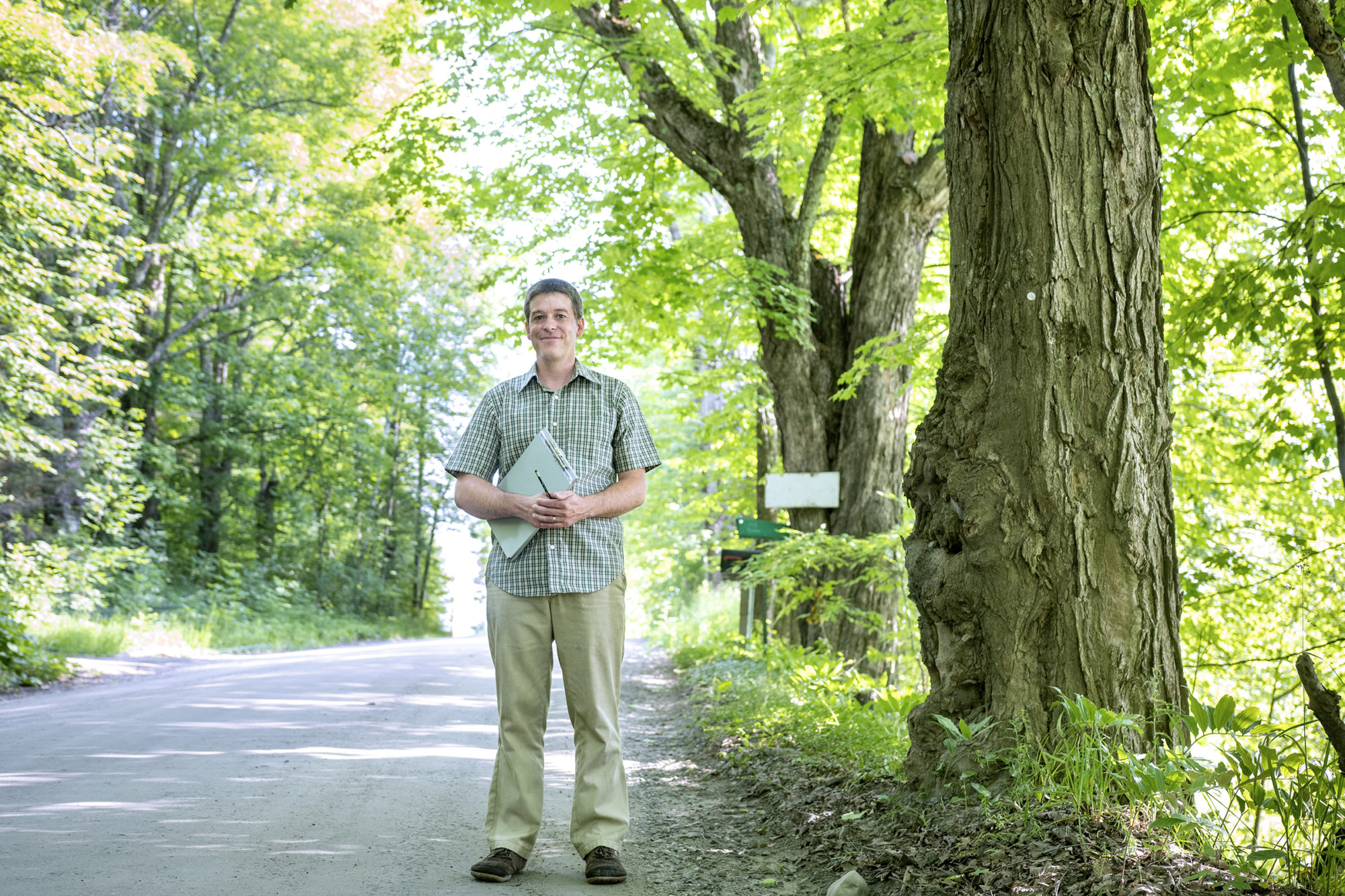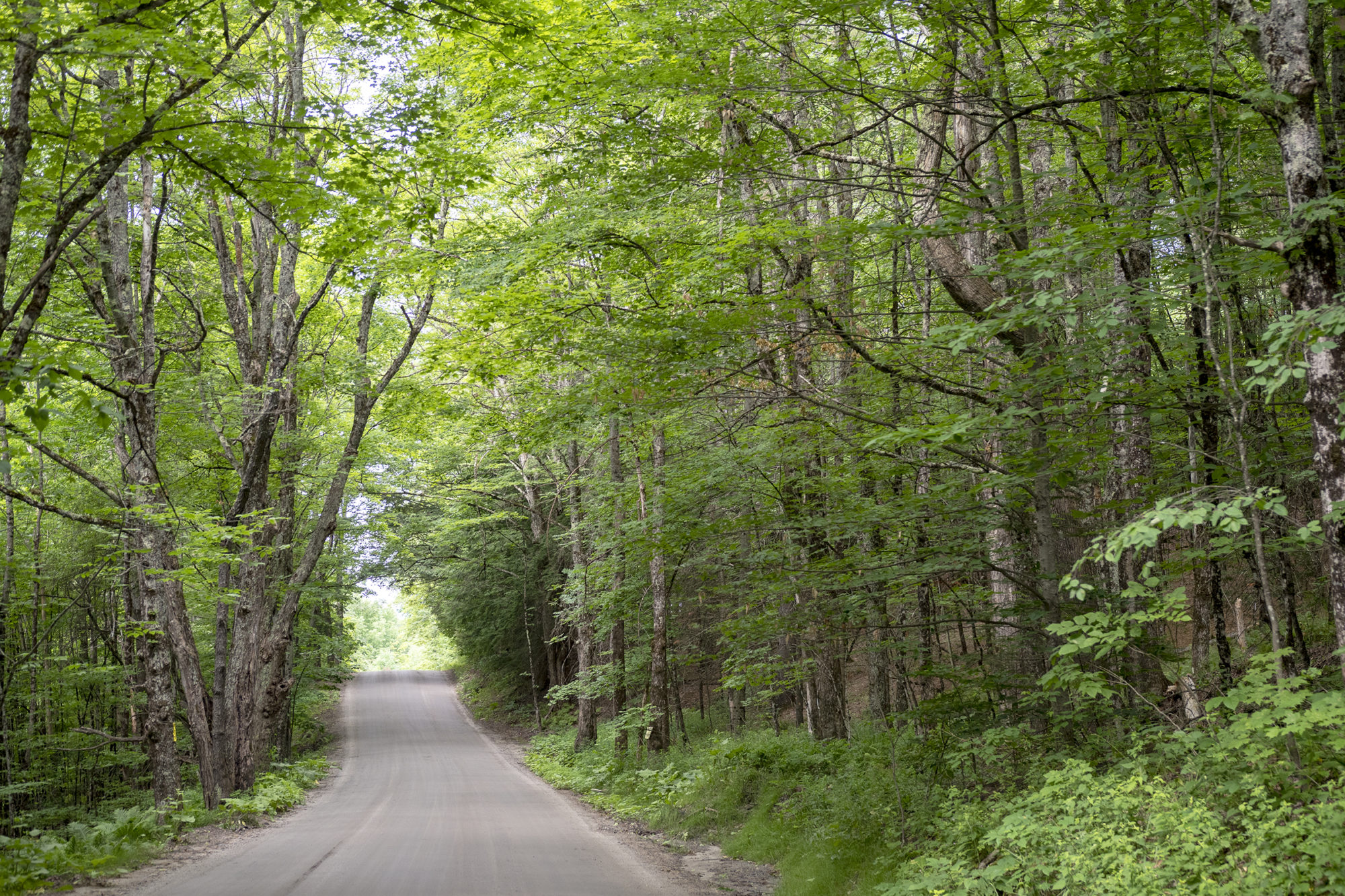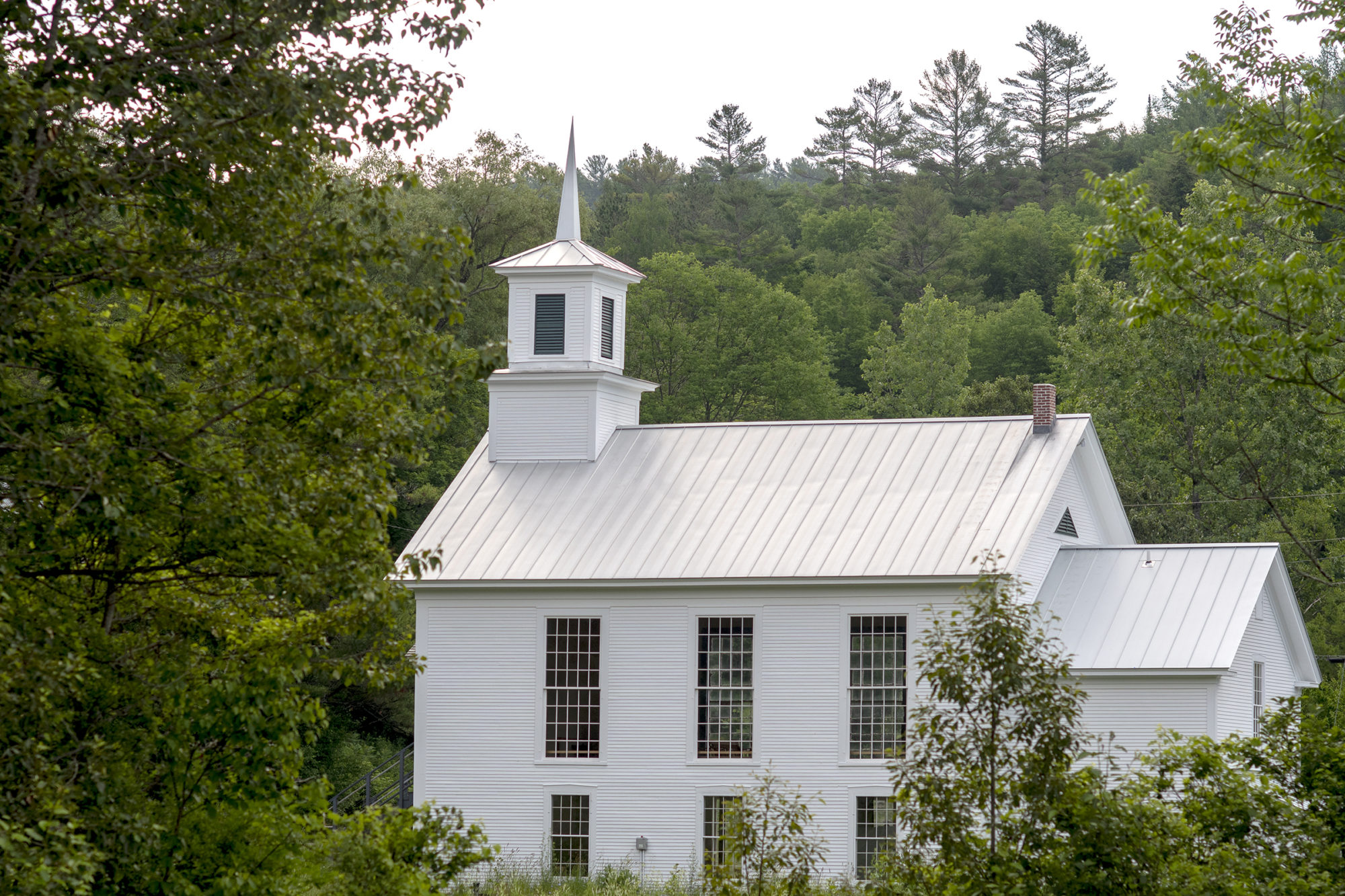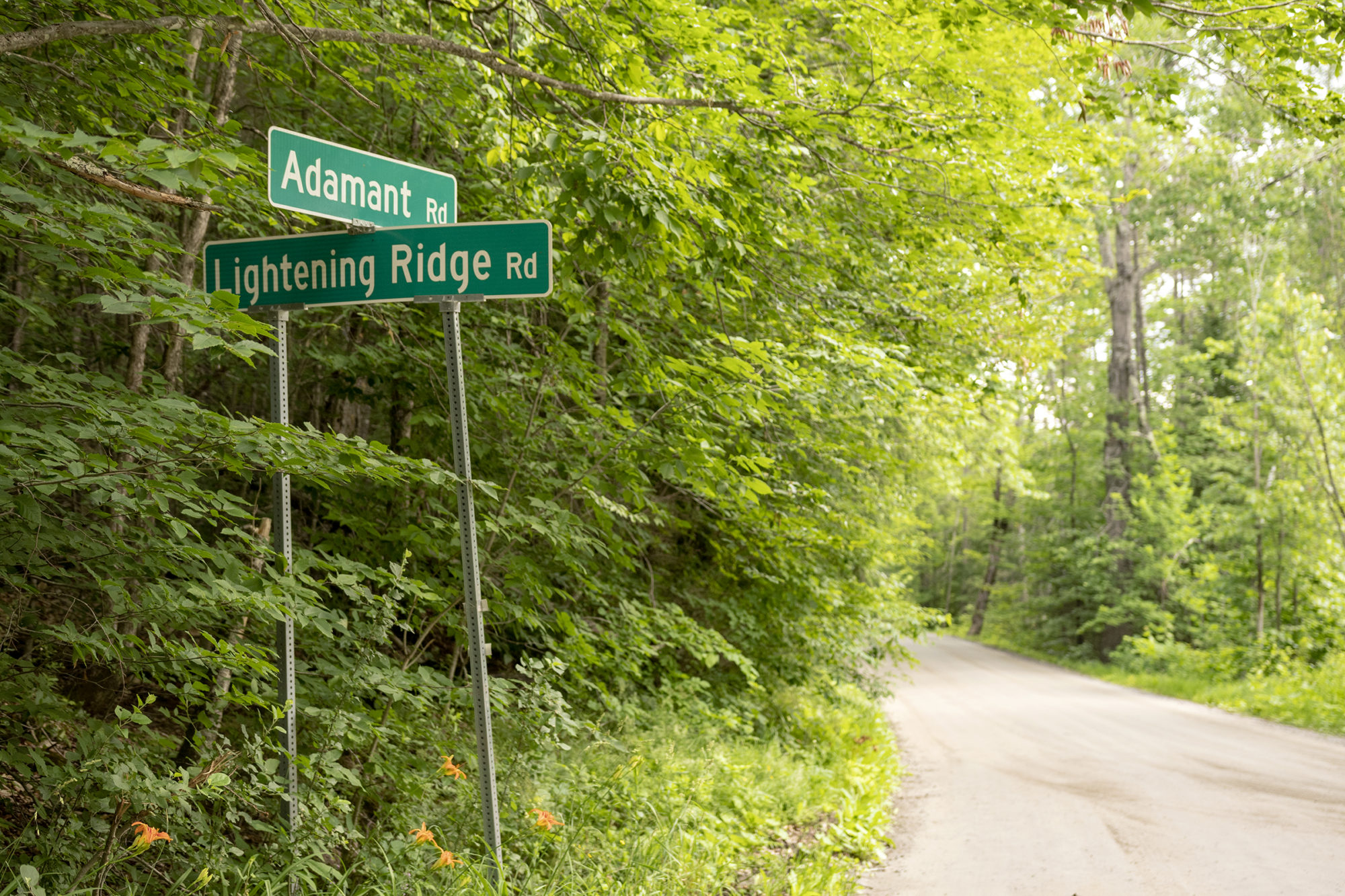Vermont Tree Wardens: A Voice for the Forest
July 26, 2021

By Christine McGowan, Forest Products Program Director at Vermont Sustainable Jobs Fund
Updates to Vermont’s 100-year old tree warden statutes provide clarity, opportunity for collaboration.
According to Elise Schadler, a program manager with Vermont Urban and Community Forestry, a tree warden is a modern day local lorax—a community spokesperson for the trees. Appointed by local selectboards, tree wardens are responsible for making determinations about public shade trees, defined as “a shade or ornamental tree located in whole or in part within the limits of a public way or public place.”
“A homeowner may want to improve their view or widen a driveway, or a road crew may have identified trees that need to be removed,” said Schadler. “The tree warden brings perspective to those conversations to make sure the many public benefits of shade trees are considered.”

Adamant Road in Calais is where local tree warden Neal Maker is working with the town to plan for the preservation of a row of maples. Photo courtesy of Erica Houskeeper.
Calais tree warden, Neal Maker, is currently working with the town road and conservation commissioners to plan for the preservation of a row of maples along Adamant Road. “It’s a beautiful row of stately old maples with pretty fields behind them,” said Maker, “but some of the trees are over 150 years old and beginning to decline, so we are working out a plan to protect the younger, healthy trees.”
Maker is also helping the town inventory its ash trees in response to the emerald ash borer. “Calais has a lot of ash trees,” said Maker. “While many will need to be removed, some will survive and it’s important we protect those to make sure that ash trees are part of our forest makeup in the future.”
Being planful and thinking about the long-term impact of the town’s trees is the most important part of the job, according to Maker.
“The more thoughtful we can be, the more we can get out of our trees,” he said. “Forests exist in public spaces, providing shade and beauty, as well as ecological benefits and wildlife habitat. All of that needs to be balanced against road maintenance and individual interests with the long-term in mind.”
Maker is working on a Shade Tree Preservation Plan, a new and optional component of a tree warden’s duties, that will be presented to the town for adoption. According to Schadler, about a dozen towns in Vermont are in the process of developing similar plans, which will be posted on the program’s website as templates for other tree wardens around the state.
Local decisions, statewide support.
Vermont is famous for its local decision-making, which is upheld by the tree warden position. Recent changes to the 100-year-old statute, however, allow state officials to better connect tree wardens across Vermont to collaborate, problem-solve, and learn from each other. “The old statute did not include any reporting of tree wardens,” said Schadler. “As of November 2020, towns are now required to certify a tree warden with the Department of Forests, Parks and Recreation, which allows us to provide more education and networking opportunities.”

The Calais Town Hall on Kent Hill Road. Vermont towns are famous for their local decision-making, and Calais is no exception. Recent changes to the 100-year-old statute, however, allow state officials to better connect tree wardens across Vermont to collaborate, problem-solve, and learn from each other. Photo courtesy of Erica Houskeeper.
Maker, who has been a tree warden in Calais for five years, believes Vermont can do a better job managing problems like the emerald ash borer if efforts are coordinated. “I love the idea of a network of tree wardens,” he said. “Small, rural towns have varying degrees of expertise and take different approaches, but we’re all part of one, big forest ecosystem.”
Vermont Urban and Community Forestry is taking the lead on creating a database of tree wardens. Schadler says that about half of Vermont towns have already reported contact information for their tree warden—a number she expects to grow as town’s fill vacancies. Information about the law and a FAQ developed with the Vermont League of Cities and Towns are available online to support tree wardens and help selectboards understand the statues.
“The old tree warden statutes were viewed as quaint and a little vague,” she said. “The updates make clear the important role they play in decision-making, so we expect more people to step forward for the position.”
Becoming a tree warden.
According to the updated statutes signed into law by Governor Scott last year, the tree warden is appointed by a local selectboard. Schadler notes that some tree wardens are professional arborists or have a background in logging or forestry, while others are municipal employees who work within public works and park departments, or citizens with an interest in trees.
The range of experience backgrounds for the position is, in part, why Vermont Urban and Community Forestry amped up their resources for tree wardens and launched an online “Tree Warden School”—a self-guided online course offering in-depth training on the roles and responsibility of a tree warden, identifying trees as a public resource, and connecting with stakeholders. They are also planning an in-person networking event this fall.
“Now that the law offers a clear understanding of the responsibilities of the tree warden, we are much better able to provide support,” said Schadler. “It’s an important role-—trees are part of the infrastructure of a community. Tree wardens give them a voice.”

Calais Tree Warden Neal Maker is working with the town to plan for the preservation of a row of maples along Adamant Road. Photo courtesy of Erica Houskeeper.
About the Vermont Forest Industry Network
Vermont’s forest products industry generates an annual economic output of $1.4 billion and supports 10,500 jobs in forestry, logging, processing, specialty woodworking, construction and wood heating. Forest-based recreation adds an additional $1.9 billion and 10,000 jobs to Vermont’s economy. The Vermont Forest Industry Network creates the space for industry professionals from across the entire supply chain and trade association partners throughout the state to build stronger relationships and collaboration throughout the industry, including helping to promote new and existing markets for Vermont wood products, from high-quality furniture to construction material to thermal biomass products such as chips and pellets. Learn more or join at www.vsjf.org.
Read More Stories Like This:
- A Vermonter’s Approach to Sustainable, Affordable Housing
- Rugged Ridge Grows Sugarbush, Business in Pace with the Forest
- Combined Heat and Power at Allard Lumber Saves Money, Jobs, and Environment
- Wood Curl Packaging Reduces Waste, Supports Healthy Forests and Local Economy
- Maple Landmark, America’s “Local Toy Company,” Rooted in Family, Forest




